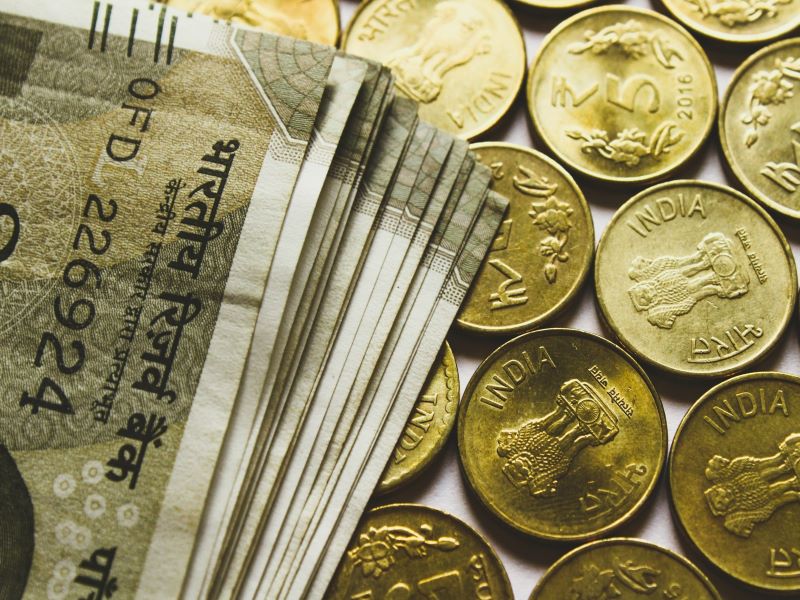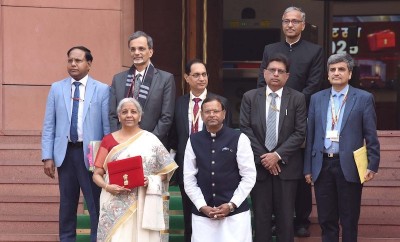 Budget
Budget
India's FY24 fiscal deficit to be set close to 6.0% of GDP, net market borrowings at Rs. 11.7 lakh crores: SBI report
Mumbai/IBNS: The Government will face stiff challenges in the Budget FY24 to stick to the road map for fiscal consolidation, amidst a global environment of declining inflation, according to a report by SBI’s Group Chief Economic Adviser.
“For India, this could make things difficult to set a nominal GDP number significantly higher than 10%, with a deflator approximately 3.5%. But this could also mean a higher GDP growth than anticipated at nearly 6.2,” said Dr. Soumya Kanti Ghosh.
For FY23, total receipts of the Government would be higher than Budget Estimate (BE) by around Rs. 2.3 lakh crore, on account of higher direct tax receipts (approximately Rs. 2.2 lakh crore), higher GST receipts (Rs. 95,000 crore) but lower dividends approx. Rs. 40,000 crore), lower fuel tax net of cess (Rs. 30,000 crore) and lower disinvestment receipts (approx. Rs. 15000-20,000 crore).
“Meanwhile, expenditure is likely to be on the higher side of the BE by around Rs. 3 lakh crore on account of higher subsidy bill and additional spending announced by the Government,” he said.
Taking this into account, fiscal deficit of the Government in FY23 is expected to come at Rs. 17.5 lakh crore. However, higher nominal GDP growth (15.4%) estimates will help in keeping the fiscal deficit at 6.4% of the GDP.
In FY24, we assume the Government expenditure is likely to increase by around approx. 8.2% over FY23 estimates to Rs. 46.0 lakh crore.
Subsidy bill which increased significantly in FY23 is estimated to be reduced in FY24 to around Rs. 3.8-4.0 lakh crore and capital expenditure is expected to grow by 12%, he opined.
Meanwhile, receipts (minus borrowing and other liabilities) are expected to grow by approx. 12.1% with tax revenue receipts growth likely at 11.0%.
With nominal GDP growth at 10%, tax buoyancy is thus expected at close to 1.1 compared to the expected tax buoyancy of 1.5 in FY.
“Thus, fiscal deficit for FY24 is estimated at around Rs. 17.95 lakh crore or 6.0% of GDP in FY24, thereby resulting in fiscal consolidation of 40 bps from the current fiscal,” the report noted.
“As far as borrowing is concerned, we believe net market borrowing of the Centre in FY24 will be around Rs. 11.7 lakh crore and with repayments of Rs. 4.4 lakh crore, gross borrowing are expected at Rs. 16.1 lakh crore. We believe switch of approx. Rs 50,000 crore is also likely to be announced,” SBI’s top economist said.
With higher tax devolution from the Centre, the states are likely to borrow around Rs. 8 lakh crore in FY23, lower than earlier anticipated.
“In FY24, the overall gross borrowing by Centre and States is likely to be Rs. 24.3 lakh crore (Rs. 22.2lakh crore in FY23) and net borrowings Rs. 17.0 lakh crore (Rs. 16.7 lakh crore in FY23),” according to the report.
We further believe that the Government will continue to rely on small saving schemes (Rs. 5 lakh crore likely in FY24).
GoI can give a hard push to SSY (Sukanya Samriddhi Yojana), through encouraging fresh registrations in a mission drive mode, allowing one-time registrations for all leftover cases up to 12 years, the report suggested.
A smooth borrowing program would require the RBI to issue papers by matching the profile of redemption of Government paper, it said.
A demand for the mid-segment has to be created to keep the pressure off the 10-year segment by doing OMO in the mid-segment.
Historically, during the rate easing cycle (2015-mid 2018), the spread between the repo and G-sec averaged to 70 bps, thus with the terminal repo rate expected at 6.5%, the 10-year G-sec yield could decline to 7.1%-7.20%.
Support Our Journalism
We cannot do without you.. your contribution supports unbiased journalism
IBNS is not driven by any ism- not wokeism, not racism, not skewed secularism, not hyper right-wing or left liberal ideals, nor by any hardline religious beliefs or hyper nationalism. We want to serve you good old objective news, as they are. We do not judge or preach. We let people decide for themselves. We only try to present factual and well-sourced news.







